Neutron stars, captivating objects lurking in the depths of the cosmos, hold the secrets to extreme density and gravity. With a mass greater than the Sun squeezed into a sphere roughly the size of a city, these enigmatic stellar remnants challenge our understanding of the universe. Journey with us as we delve into the formation, composition, and properties of neutron stars. Discover the cataclysmic events that give birth to these celestial wonders and explore the intense gravitational forces at their cores. Join us as we unravel the mysteries of pulsars, the lighthouses of the universe, and uncover the technological advancements enabling us to observe and study these extraordinary cosmic entities. Embark on this cosmic odyssey as we reveal the awe-inspiring world of neutron stars, the densest objects in the known universe.
Contents
- What are Neutron Stars?
- The Stellar Remnants
- Extreme Density and Gravity
- Pulsars: Lighthouses of the Universe
- Unveiling Neutron Stars with Technology
- Conclusion
-
Frequently Asked Questions
- 1. How are neutron stars formed?
- 2. What is the size of a neutron star?
- 3. How dense are neutron stars?
- 4. Are neutron stars the same as black holes?
- 5. How do neutron stars generate magnetic fields?
- 6. Do neutron stars emit light?
- 7. Can neutron stars collide with each other?
- 8. How do scientists study neutron stars?
- 9. Can anything escape the gravitational pull of a neutron star?
- 10. Are neutron stars stable?
- References
-
Frequently Asked Questions
- 1. How are neutron stars formed?
- 2. What is the composition of a neutron star?
- 3. What are some properties of neutron stars?
- 4. How are neutron stars different from other stellar remnants?
- 5. What types of neutron stars exist?
- 6. What is the anatomy of a neutron star?
- 7. How do pulsars form?
- 8. What are the emissions and characteristics of pulsars?
- 9. How do we observe neutron stars?
- 10. What role do neutron star mergers play in the study of gravitational waves?
- References
- Read More
What are Neutron Stars?
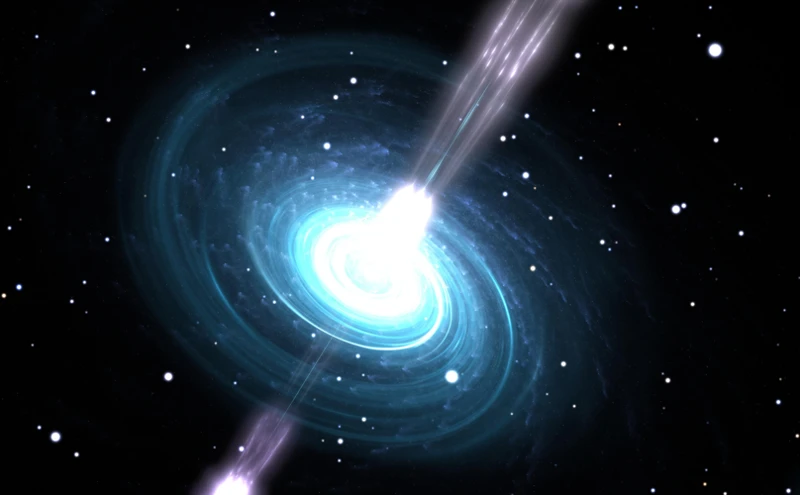
Neutron stars, often described as the densest objects in the universe, are remnants of massive stars that have undergone a catastrophic supernova explosion. These stellar wonders are born from the remnants of a dying star, when the core collapses under its own gravitational pull. The collapse is so intense that the protons and electrons in the atoms are forced together, forming neutrons. Hence the name – neutron stars. With masses around 1.4 times that of our Sun, packed into a radius of just about 10 kilometers, these celestial entities exhibit extreme density. In fact, a single teaspoon of neutron star material would weigh billions of tons on Earth.
The composition of neutron stars is truly fascinating. As their name suggests, they are composed primarily of neutrons, densely packed together in a highly degenerate state. This means that the laws of quantum mechanics dominate, with electrons and protons merging to form neutrons. This densely packed nuclear matter creates an incredibly strong gravitational pull. Additionally, the surface of a neutron star is covered by a thin crust made up of atomic nuclei, while the core is a superfluid of neutrons and possibly other exotic particles.
The properties of neutron stars defy imagination. With their incredibly strong gravitational fields, they exhibit intense magnetic fields, sometimes a trillion times stronger than Earth’s. This makes them powerful sources of electromagnetic radiation, emitting beams of light and radio waves from their poles. These beams of radiation are only visible to us when they are pointed towards Earth, resulting in what we call pulsars. Pulsars are neutron stars that emit beams of regular, pulsating radiation, like cosmic lighthouses sweeping across the universe.
Neutron stars are truly some of the most extreme objects in the cosmos, challenging our understanding of physics and the limits of the known universe. Fascinating and enigmatic, they continue to captivate astronomers and astrophysicists alike, as we strive to unravel the secrets they hold.
1. Formation
Neutron stars are formed through a process known as supernova explosions, which occur at the end of the lifecycle of massive stars. When a massive star, typically at least eight times the mass of the Sun, exhausts its nuclear fuel, it can no longer support itself against gravity. The core of the star undergoes rapid collapse, releasing an enormous amount of energy in a supernova explosion.
During the supernova explosion, the outer layers of the star are ejected into space, leaving behind a dense core. If the core’s mass is between about 1.4 and 3 times the mass of the Sun, it becomes a neutron star. This critical threshold is known as the Chandrasekhar limit. Above this limit, the core continues to collapse to form a black hole.
The collapse of the star’s core is an incredibly violent and energetic event. It releases an immense amount of energy, equivalent to the light emitted by an entire galaxy. This is why supernovae are some of the brightest phenomena in the universe, visible across vast distances.
The process of neutron star formation is not fully understood, and it remains an active area of research for astrophysicists. However, it is clear that these extraordinary objects are created from the remnants of massive stars, which undergo a catastrophic explosion, leaving behind a highly dense and compact core. This core is composed primarily of neutrons and is enveloped by a thin crust, forming the unique and enigmatic neutron stars we observe in the cosmos today.
2. Composition
The composition of neutron stars is a complex and intriguing combination of dense nuclear matter. At the core of a neutron star, there exists a soup of subatomic particles, primarily neutrons, held together by their intense gravitational forces. This densely packed nuclear matter is governed by the laws of quantum mechanics and is known as a neutron-degenerate matter. The pressures within the core of a neutron star are so extreme that the neutrons may break down into an even more exotic form of matter known as quark matter. These hypothetical quark stars, if they exist, would consist of a dense sea of quarks, the fundamental building blocks of protons and neutrons, bound together by the strong nuclear force.
Surrounding the core, neutron stars also possess a crust composed of atomic nuclei. This “nuclear pasta” crust gets its name from its unique structure resembling various types of pasta, including spaghetti and lasagna. The nuclei in the crust are arranged in a complex lattice-like pattern due to the extreme densities and pressures. As one moves further out from the core, the density decreases, causing the nuclei to transition into a liquid state. This transition gives rise to unique properties, such as superfluidity and superconductivity, within the neutron star’s interior.
In addition to neutrons and atomic nuclei, the composition of neutron stars may also include other exotic particles such as hyperons and mesons. Hyperons are particles that contain at least one strange quark and are believed to exist under the extreme conditions found in neutron star cores. Mesons, on the other hand, are particles composed of a quark and an antiquark, and their presence within neutron stars can have significant implications for their overall structure and behavior.
Studying the composition of neutron stars provides valuable insights into the fundamental nature of matter and the extreme conditions that exist within these cosmic enigmas. Scientists rely on theoretical models, sophisticated computer simulations, and observational data to unravel the mysteries of these extraordinary celestial objects. By understanding the composition of neutron stars, we can gain a deeper understanding of the fundamental building blocks of our universe and the fascinating phenomena that occur under extreme conditions.
3. Properties
Neutron stars possess a range of extraordinary properties that make them stand out in the vastness of space. With masses up to twice that of the Sun packed into a sphere only about 10 kilometers in radius, these celestial objects exhibit extreme gravitational attraction. The gravitational pull on the surface of a neutron star is about 2 billion times stronger than that on Earth. This immense gravity causes the tremendous compression of matter, resulting in an astonishing density. The inner core of a neutron star is incredibly dense, with densities surpassing that of atomic nuclei. In fact, a sugar cube-sized amount of neutron star material would weigh as much as Mount Everest!
Another unique property of neutron stars is their astonishing rotational speed. When a massive star collapses into a neutron star, the conservation of angular momentum causes the star to spin rapidly. Neutron stars can complete hundreds of rotations per second, resulting in a phenomenon called “spin-up.” This rapid rotation generates powerful magnetic fields, which can interact with the surrounding environment, emitting beams of electromagnetic radiation such as X-rays and radio waves.
The extreme environment of neutron stars also leads to some peculiar phenomena. For instance, their strong gravitational pull causes time dilation, which means time passes slower near the surface of a neutron star compared to distant observers. This effect was famously confirmed by observations of pulsars, where the regular ticking of their pulses was found to be incredibly precise.
Additionally, neutron stars can exhibit temperature variations across their surface. The outermost layer, or the crust, can be extremely hot due to continued nuclear reactions, while the core can still retain residual heat from the star’s formation. These temperature variations contribute to the complex and dynamic behavior observed in neutron stars.
Understanding the properties of neutron stars is crucial for unraveling the mysteries of the cosmos and advancing our knowledge of astrophysics. Through detailed observations and theoretical modeling, scientists continue to explore these extreme objects, pushing the boundaries of our understanding and expanding our view of the universe.
The Stellar Remnants
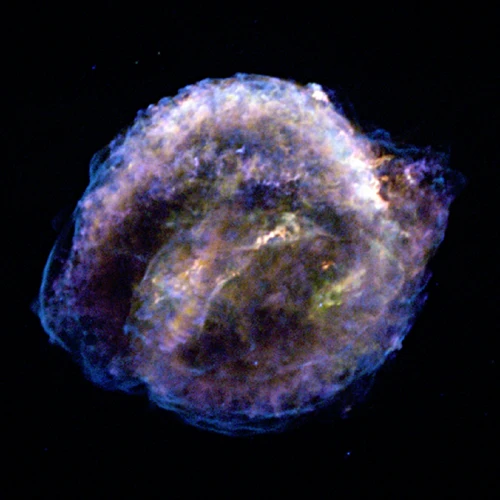
Supernovae, the explosive deaths of massive stars, are the cataclysmic events that pave the way for the formation of neutron stars, which are classified as stellar remnants. When a massive star exhausts its nuclear fuel, gravity takes over and causes the star to collapse in on itself. The core implodes, resulting in an enormous explosion that releases an immense amount of energy. This explosion, known as a supernova, blasts off the outer layers of the star into space, while simultaneously compressing the core into a super-dense object – a neutron star.
These stellar remnants come in different varieties, depending on their characteristics and properties. One type of neutron star is known as a pulsar, which emits beams of electromagnetic radiation from its poles. Pulsars are incredibly precise cosmic timekeepers, with their beams sweeping across the universe, creating regular pulses of emission. Another type of neutron star, called a magnetar, possesses an even stronger magnetic field than pulsars, making them highly energetic and prone to bursts of X-rays and gamma rays.
The formation and existence of these stellar remnants, neutron stars, is a testament to the cyclical nature of the cosmos. Through the powerful forces of nature, massive stars reach the end of their lives, only to give rise to celestial remnants that continue to intrigue and astonish us with their extreme properties. As we delve deeper into our understanding of these remnants, we uncover more about the dynamics of the universe and our place within it. The study of neutron stars opens up a realm of possibilities that expands our knowledge of the cosmos, allowing us to grasp the intricate interplay between life, death, and the ever-evolving nature of the universe.
1. Supernovae and Neutron Star Formation
Supernovae, the explosive deaths of massive stars, play a crucial role in the formation of neutron stars. When a massive star reaches the end of its life, it has burned through all of its nuclear fuel and can no longer sustain the fusion reactions that provide the outward pressure to counteract gravity. The core of the star collapses under its own weight, triggering a cataclysmic explosion known as a supernova. This explosion releases an immense amount of energy, momentarily outshining entire galaxies. The outer layers of the star are blasted into space, while the core collapses inward.
During this collapse, the immense pressure and temperature cause the protons and electrons in the star’s core to merge, forming neutrons. The core becomes so dense that the neutrons are packed tightly together, giving rise to a neutron star. It’s important to note that not all stars end their lives as neutron stars; only stars that are massive enough, typically around eight times the mass of our Sun or more, have enough mass to undergo the intense collapse necessary to form a neutron star.
The formation of a neutron star is an astonishing process, with the collapse of a massive star leading to the creation of an incredibly dense and compact object. These stellar remnants continue to fascinate scientists and provide valuable insights into the nature of matter and the forces at work within the universe.
To continue reading about the different types of neutron stars that can form after a supernova, check out our article on astrology house roles.
2. Types of Neutron Stars
When it comes to neutron stars, there are different types that possess unique characteristics based on various factors. One such type is the radio pulsar, which emits beams of radio waves that can be detected from Earth. These pulsars are often found in binary systems, where they orbit a companion star. Another type is the X-ray pulsar, which emits X-rays instead of radio waves. These X-ray emissions are caused by the high temperatures and intense magnetic fields present in these neutron stars. An interesting subtype of the X-ray pulsar is the accretion-powered X-ray pulsar, which obtains its energy from the matter accreting onto its surface from a nearby companion star. Magnetars are another intriguing type of neutron star. They possess extremely strong magnetic fields, which can be a thousand times more powerful than those of regular neutron stars. These colossal magnetic fields give rise to intense bursts of X-rays and gamma rays. Lastly, there are the glitchers. These neutron stars occasionally undergo sudden spin rate increases called glitches, due to changes in their internal structure. Glitchers provide valuable insights into the composition and behavior of neutron stars. Understanding the different types of neutron stars allows astronomers to appreciate the diverse nature and complexities of these extraordinary celestial phenomena.
Extreme Density and Gravity
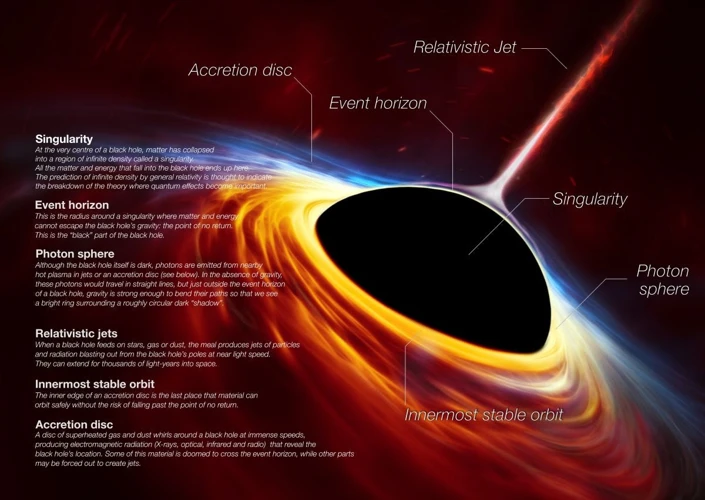
Neutron stars are renowned for their extreme density and the colossal gravitational forces they exert. To comprehend the remarkable properties of these celestial objects, let’s delve into their anatomy. Neutron stars consist of several distinct layers, each contributing to their mind-boggling density. At the core lies the innermost region, composed of the most tightly packed neutrons tightly packed neutrons, accounting for the majority of the star’s mass. Surrounding the core is the outer core, a superfluid of neutrons and other exotic particles. Moving outward, we encounter the solid crust, a thin layer composed of atomic nuclei. It is under these extraordinary conditions that matter takes on new forms, obeying the laws of quantum mechanics. Evidently, the intense gravitational pull of neutron stars is not to be underestimated. Gravity at the core is astoundingly strong, crushing matter to unimaginable densities. To put this into perspective, the force of gravity on the surface of a neutron star would cause an object dropped from a height of one meter to reach speeds of over 7,000 kilometers per second before hitting the surface. It is this staggering density and gravity that make neutron stars remarkable objects, defying the limits of our understanding of the universe.
1. Neutron Star Anatomy
1. Neutron Star Anatomy
The anatomy of a neutron star is a captivating subject that unveils the intricate layers and structures within these dense cosmic objects. At the core of a neutron star lies the innermost region known as the neutron star crust. This crust is made up of a solid lattice of atomic nuclei, compressed under the immense gravitational pressure. As we move outward from the crust, we encounter the outer layer known as the neutron star’s atmosphere, consisting of extremely hot, thin gases.
One of the most intriguing features of a neutron star is its magnetic field. This strong magnetic field permeates throughout the star and influences its behavior. The magnetic field can generate powerful electromagnetic emissions, including X-rays and gamma rays, as well as influence the rotation and stability of the star itself. In fact, neutron stars with exceptionally strong magnetic fields are referred to as magnetars, exhibiting even more extreme phenomena.
Beneath the atmosphere lies the region of the neutron star known as the neutron star core. This core is a dense soup of superfluid neutrons and possibly other exotic subatomic particles. The nature of matter in this core is still an area of active research, as scientists try to understand its properties and the interactions that occur under such extreme conditions.
Another noteworthy aspect of neutron star anatomy is their unique rotational behavior. Neutron stars possess an incredible property known as “conservation of angular momentum.” As a result, when a massive star collapses to form a neutron star, its rotation rate increases dramatically, leading to rapid spin. This rapid rotation can give rise to fascinating phenomena such as pulsars, where the beams of electromagnetic radiation emanate from the poles and appear to pulsate as the star rotates.
Understanding the anatomical structure of neutron stars is crucial in unraveling the mysteries of their formation, behavior, and the physical processes occurring within these dense cosmic objects. Scientists and astronomers continue to explore and study these fascinating entities, shedding light on the nature of matter, gravity, and the extreme environments that exist in the far reaches of our universe.
2. Gravity at the Core
Gravity at the core of a neutron star is an extraordinary phenomenon that defies our everyday understanding. At the core, the immense mass of the star is packed into an incredibly small volume, leading to an astronomical density. The force of gravity at the center of a neutron star is mind-bogglingly strong, many billions of times stronger than what we experience on Earth.
This immense gravity poses unique challenges for our understanding of physics. The mass of a neutron star is so concentrated that it warps the fabric of spacetime around it, creating a gravitational field that is incredibly intense. This intense gravity causes time to slow down near the surface of the star, a phenomenon known as time dilation.
In fact, the gravitational force on the surface of a neutron star is so strong that it allows for the formation of strange and exotic states of matter. At the core, the pressure is high enough to overcome the repulsive forces between neutrons, allowing them to merge into a superfluid, a state in which the neutrons flow without any resistance. This superfluid behavior is governed by the laws of quantum mechanics and creates an intriguing environment where matter behaves in ways that are far removed from our everyday experiences.
The study of gravity at the core of neutron stars has implications for our understanding of the fundamental laws of physics. It provides insights into the behavior of matter under extreme conditions and helps us push the boundaries of our knowledge. By studying the gravitational interactions in these dense stellar remnants, scientists gain valuable information about the nature of gravity, spacetime, and the fundamental building blocks of the universe.
The exploration of gravity at the core of neutron stars continues to be an exciting area of research, offering new insights into the nature of the universe and pushing the boundaries of our understanding of the cosmos. As we delve deeper into the mysteries of these extraordinary objects, we gain a greater appreciation for the elegance and complexity of the laws that govern our universe.
Pulsars: Lighthouses of the Universe
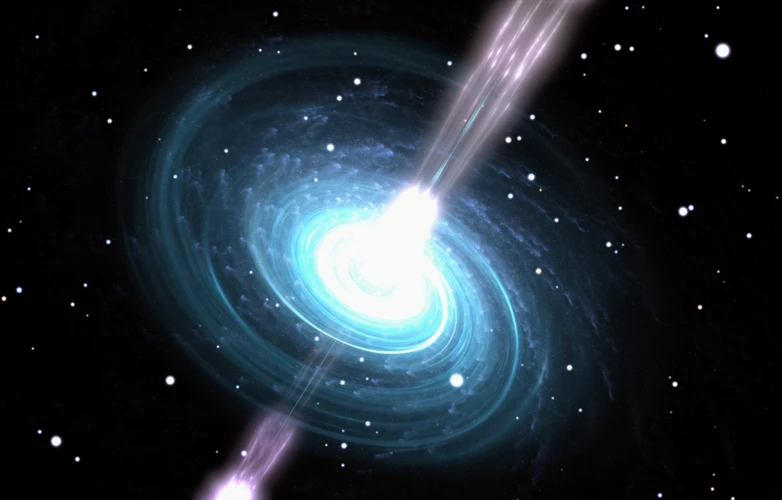
Pulsars, known as the lighthouses of the universe, are a specific type of neutron star that emit beams of regular, pulsating radiation. These mesmerizing celestial objects are formed when a massive star undergoes a supernova explosion and collapses, leaving behind a highly dense core. As the neutron star spins rapidly, its magnetic field is also coupled with this rotation, causing the emission of beams of electromagnetic radiation. These beams are emitted from the magnetic poles of the pulsar and can be observed as pulses of light as they sweep across our line of sight.
The formation of pulsars starts with the collapse of a massive star, resulting in a neutron star core. During the collapse, the rotational speed increases dramatically, conserving angular momentum. As a result, the rapidly spinning neutron star is formed, with rotation periods ranging from a few milliseconds to a few seconds. It is this rapid rotation combined with the strong magnetic field that gives rise to the emission of pulsed radiation.
Pulsars exhibit certain characteristic emissions and characteristics that make them unique objects to study. The pulse periods of pulsars are incredibly stable, ticking with remarkable precision, comparable to the ticking of an atomic clock. This regularity enables researchers to use pulsars as cosmic timekeepers, aiding in navigation for spacecraft and exploring the nature of the space-time continuum. Additionally, pulsars emit radiation at various wavelengths, from radio waves to X-rays and even gamma rays, providing valuable insights into the extreme physics taking place within these cosmic beacons.
The study of pulsars has opened up new avenues of research, further deepening our understanding of neutron stars and the nature of the universe. By analyzing the pulsar emissions, scientists can gain insights into the extreme conditions present near the surface and within the core of these cosmic entities. Additionally, the study of pulsars has provided evidence for the existence of gravitational waves – ripples in the fabric of space-time caused by cataclysmic events in the universe. The discovery of pulsars in binary systems has allowed for the study of pulsar timing variations, aiding in the detection and characterization of these elusive gravitational waves.
Pulsars, often referred to as the lighthouses of the universe, are remarkable objects that emit regular beams of radiation as they rapidly rotate. These cosmic beacons provide valuable insights into the extreme physics and dense matter present within neutron stars. As our technology advances, further studies of pulsars will continue to unlock the mysteries of the universe, allowing us to delve deeper into the nature of space and time.
1. Pulsar Formation
Pulsars, the cosmic lighthouses of the universe, are formed through a remarkable process. When a massive star exhausts its nuclear fuel, it undergoes a supernova explosion, leaving behind a dense core known as a neutron star. As this newly formed neutron star rotates, its magnetic field is amplified, resulting in the emission of beams of electromagnetic radiation from its poles. The intense magnetic fields cause the beams to be focused and aligned with the rotational axis of the star. This alignment, coupled with the rapid rotation of the neutron star, causes the beams to sweep across space, just like the beam of light from a lighthouse. When these beams cross our line of sight here on Earth, we observe regular pulses of radiation, hence the name pulsars. The formation of pulsars is a fascinating phenomenon that provides us with a unique window into the extreme conditions of neutron stars. Through the study of pulsars, scientists gain insights into the nature of matter, gravity, and the fundamental laws that govern the universe.
2. Pulsar Emissions and Characteristics
Pulsars, the cosmic lighthouses of the universe, are a unique class of neutron stars that emit powerful beams of radiation as they spin rapidly. These beams of radiation are created and intensified by the intense magnetic fields surrounding these celestial objects. As a pulsar rotates, the beams sweep across the sky much like a lighthouse beam, leading to regular pulses of radiation that can be detected from Earth. These pulses can occur with remarkable precision, sometimes as regular as atomic clocks, making pulsars excellent natural timing devices.
The emissions from pulsars cover a wide range of the electromagnetic spectrum. Radio waves are the most common form of emission and were the first observed from pulsars. However, pulsars also emit radiation across the rest of the spectrum, including visible light, X-rays, and even gamma-rays. The emissions from pulsars provide valuable information about their properties, such as their rotational period and magnetic field strength.
One intriguing characteristic of pulsars is their ability to spin incredibly fast. While some pulsars rotate at a comparatively leisurely pace, completing a rotation in a few seconds or minutes, others are incredibly rapid, spinning hundreds of times per second. These rapidly rotating pulsars, known as millisecond pulsars, are thought to have been spun up over time by the transfer of mass from a companion star in a binary system. This process results in the conservation of angular momentum and allows the pulsar to spin at such high speeds.
The study of pulsars has provided valuable insights into fundamental physics. Observations of pulsar emissions have confirmed the existence of gravitational waves, as predicted by Einstein’s theory of general relativity. Pulsar timing arrays are being used to detect these ripples in spacetime, providing a complementary approach to the direct detection method used by LIGO and VIRGO.
Pulsars with their unique emissions and characteristics have opened up new avenues of research in astrophysics. From their precise timing capabilities to their ability to help detect gravitational waves, these cosmic beacons continue to enhance our understanding of the universe and the extraordinary phenomena that exist within it.
Unveiling Neutron Stars with Technology
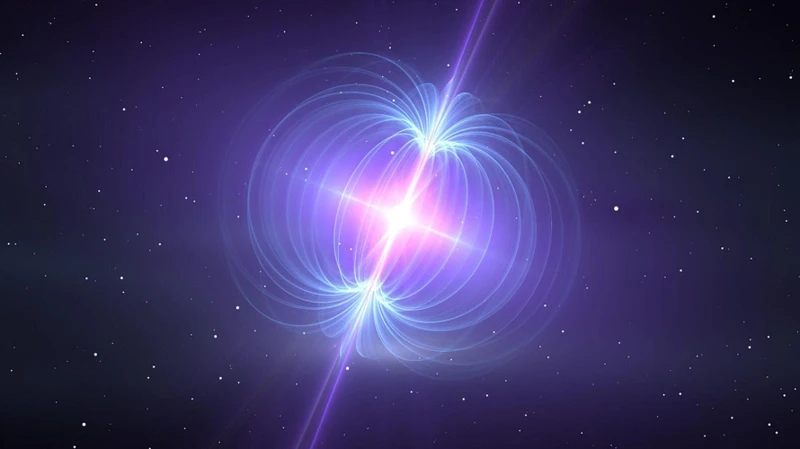
Unveiling the mysteries of neutron stars has been made possible through advancements in technology and innovative observing techniques. Astronomers have developed various methods to study these cosmic powerhouses and gather valuable information about their composition, structure, and behavior.
One of the primary ways of observing neutron stars is through the use of telescopes. X-ray telescopes, in particular, have been instrumental in detecting and studying these celestial objects. Neutron stars emit high-energy X-ray radiation, which can be detected and analyzed to unveil their properties. Instruments like the Chandra X-ray Observatory have provided astronomers with detailed images and spectra, allowing them to study the intense magnetic fields, accretion disks, and jets associated with neutron stars.
In addition to telescopes, gravitational wave detectors have ushered in a new era of studying neutron stars. These detectors, such as the Laser Interferometer Gravitational-Wave Observatory (LIGO), can detect minuscule ripples in the fabric of spacetime caused by violent cosmic events, including neutron star mergers. The detection of gravitational waves has provided astronomers with valuable insights into the nature of neutron star mergers, shedding light on their extreme conditions and the creation of heavy elements in the universe.
Advancements in computational modeling and simulations have allowed scientists to recreate and study neutron star behavior in intricate detail. These simulations help astronomers understand the complex physical processes occurring within neutron stars, such as the behavior of matter at extreme densities and the dynamics of magnetic fields. By comparing observational data with simulated models, researchers can refine their understanding of neutron stars and unravel their enigmatic nature.
The exploration of neutron stars with technology has opened up new avenues for scientific discovery and deepened our understanding of the universe. Through the utilization of telescopes, gravitational wave detectors, and sophisticated simulations, we continue to push the boundaries of knowledge and uncover the secrets held by these mesmerizing cosmic objects. As technology continues to advance, we can expect even more remarkable insights into the nature of neutron stars and the mysteries they hold.
1. Observing Neutron Stars
Observing neutron stars, with their extreme density and gravitational forces, poses unique challenges and requires advanced technology. Astronomers utilize a variety of instruments and techniques to study these cosmic marvels. One such method is through the detection of electromagnetic radiation emitted by neutron stars. Radio telescopes play a crucial role in observing pulsars, which are neutron stars that emit beams of regular, pulsating radiation. By analyzing the timing and characteristics of these radio signals, scientists can glean valuable information about the neutron star’s rotation, magnetic field, and other properties.
Another powerful tool for observing neutron stars is the use of X-ray telescopes. Neutron stars often emit X-rays due to their intense magnetic fields and the process of accretion. Accretion occurs when a neutron star pulls in matter from a nearby companion star. As this matter accelerates and spirals towards the neutron star’s surface, it releases a tremendous amount of energy in the form of X-rays. X-ray telescopes, such as the Chandra X-ray Observatory, can capture and analyze the X-ray emissions, providing insights into the structure and behavior of neutron stars.
In recent years, the discovery of gravitational waves has opened up a new window for observing neutron stars. Neutron star mergers, known as kilonovae, produce gravitational waves that can be detected by ground-based observatories like LIGO and Virgo. These mergers are rare and cataclysmic events that result in the release of enormous amounts of energy. By detecting the gravitational waves generated by these mergers, scientists can study the properties of neutron stars in unprecedented detail and gain a deeper understanding of their formation and evolution.
Through these observation methods and technological advancements, scientists have made significant strides in unraveling the mysteries of neutron stars. The data collected allows for the formulation of theories and models that help explain the extreme physics at play within these dense objects. As technology continues to evolve and our knowledge expands, we can expect even more remarkable discoveries and insights into the nature of neutron stars.
2. X-ray Emissions and Accretion Disks
X-ray emissions from neutron stars provide valuable insights into their unique properties and interactions with their surrounding environment. These emissions are the result of matter accretion onto the neutron star from a nearby companion star in a binary system. As the companion star evolves and expands, its outer layers can transfer mass onto the neutron star. This transferred matter forms an accretion disk around the neutron star, composed of gas and dust swirling in a tight orbit. The gravitational pull of the neutron star causes the gas in the accretion disk to be heated to extremely high temperatures, reaching millions of degrees Celsius. The intense heat and pressure lead to the release of high-energy X-rays that can be detected by telescopes.
The X-ray emissions from these accretion disks provide valuable information about the properties and behavior of neutron stars. By studying the spectral characteristics of the X-ray emission, scientists can determine the temperature, density, and composition of the accreted matter. Additionally, the observed variations in X-ray flux and energy can reveal important details about the dynamics of the accretion process, such as the rate at which matter is being transferred onto the neutron star and the presence of any disruptions or fluctuations in the accretion flow.
The study of X-ray emissions from neutron stars can also shed light on a variety of astrophysical phenomena. For instance, X-ray binaries, which consist of a neutron star and a normal star, are excellent laboratories for studying the physics of matter in extreme conditions. These systems exhibit a range of behavior, including X-ray bursts and outbursts, which are essential in understanding the accretion processes and the physics of compact objects.
In recent years, advancements in X-ray telescopes and instruments have greatly enhanced our ability to observe and analyze the X-ray emissions from neutron stars. Missions such as NASA’s Chandra X-ray Observatory and ESA’s XMM-Newton have provided unprecedented images and data, allowing scientists to probe the depths of these exotic objects. By studying X-ray emissions and the properties of accretion disks, we continue to expand our understanding of neutron stars, unlocking the secrets of their astrophysical significance and their role in the cosmic landscape.
3. Neutron Star Mergers and Gravitational Waves
3. Neutron Star Mergers and Gravitational Waves:
Neutron star mergers, the spectacular cosmic events that occur when two neutron stars collide, are not only awe-inspiring but also provide invaluable scientific insights. These mergers release an enormous amount of energy in the form of gravitational waves, ripples in the fabric of spacetime. Gravitational waves are predictions of Einstein’s general theory of relativity and were first directly detected in 2015, a monumental achievement in astrophysics.
When two neutron stars gravitationally interact and ultimately merge, they create a cataclysmic cosmic event known as a kilonova. This cosmic explosion releases an intense burst of radiation across the entire electromagnetic spectrum. The collision ejects a vast amount of heavy elements such as gold, platinum, and uranium into space, contributing to the cosmic abundance of these precious metals.
The merger of neutron stars also generates powerful gravitational waves that reverberate throughout the universe. These gravitational waves carry unique signatures that allow scientists to study the properties of neutron stars, such as their mass and radius. By measuring the precise nature of the gravitational waves emitted during these mergers, scientists can gain insights into the extreme physics that take place within neutron stars.
The groundbreaking detection of gravitational waves from neutron star mergers has opened up new avenues of research. It has provided scientists with the ability to probe the fundamental properties of matter under extreme conditions and test the limits of our understanding of the universe.
The discovery of gravitational waves from neutron star mergers has also provided a new method of astronomical observation. By detecting these waves, astronomers can pinpoint the location of the merger in the sky and study the aftermath of the collision across different wavelengths of light. This multi-messenger approach involving both gravitational waves and traditional electromagnetic observations allows scientists to gather a more comprehensive understanding of these cosmic events.
Neutron star mergers and the associated detection of gravitational waves have revolutionized our understanding of the cosmos. They have unveiled the extreme physics at play within neutron stars and shed light on the mysteries of the universe. With ongoing advancements in technology and collaborations between astronomers and physicists, we can expect further breakthroughs and a deeper understanding of these incredible cosmic phenomena.
Link: /ophiuchus-missing-zodiac-sign-astrology/
Conclusion

In conclusion, neutron stars are truly remarkable and intriguing objects that push the boundaries of our understanding of the universe. From their formation through catastrophic supernovae events to their extreme composition and mind-boggling properties, they captivate the minds of scientists and stargazers alike. These dense remnants of massive stars showcase the incredible forces of gravity at play, with their immense mass packed into a relatively tiny space. Their intense gravitational fields generate powerful magnetic fields, leading to the formation of pulsars, which serve as cosmic lighthouses in the vastness of space.
Through advancements in technology and observational methods, we have been able to uncover the secrets of neutron stars and gain valuable insights into the fundamental nature of matter and the laws of physics. The study of neutron stars continues to provide us with valuable information about the universe and challenges us to expand our understanding of the cosmos. As we delve deeper into the mysteries of these extraordinary objects, we come closer to unlocking the secrets of the universe and our place within it.
Neutron stars are just one of the many wonders that the universe has to offer, and their exploration opens up new avenues of discovery and knowledge. Whether you are an astrophysics enthusiast or simply marvel at the vastness of space, neutron stars remind us of the boundless wonders that exist beyond our planet. So, let us continue to gaze at the stars, ponder the mysteries they hold, and embark on an endless journey of exploration and understanding.
Frequently Asked Questions

1. How are neutron stars formed?
Neutron stars are formed when a massive star reaches the end of its life and undergoes a supernova explosion. The core of the star collapses under its gravitational pull, and the protons and electrons merge to form neutrons.
2. What is the size of a neutron star?
A neutron star typically has a radius of about 10 kilometers, making it incredibly compact. To put it in perspective, you could fit millions of neutron stars within the size of our Earth!
3. How dense are neutron stars?
Neutron stars are incredibly dense. In fact, they are among the densest objects in the known universe. Their mass is typically more than that of our Sun, packed into a sphere the size of a city.
4. Are neutron stars the same as black holes?
No, neutron stars and black holes are different. Neutron stars are incredibly dense remnants of massive stars, while black holes are formed when the core of a massive star collapses beyond the point of neutron star formation.
5. How do neutron stars generate magnetic fields?
The strong magnetic fields of neutron stars are thought to be generated by a dynamo effect involving the rotation of the original star’s core. As the core collapses to form a neutron star, its magnetic field intensifies.
6. Do neutron stars emit light?
Yes, neutron stars can emit light and other forms of electromagnetic radiation. When the beams of radiation emitted from their magnetic poles pass Earth, they are detected as pulsars, creating regular pulsating signals.
7. Can neutron stars collide with each other?
Yes, neutron star mergers can occur when two neutron stars are in a binary system. These mergers can release an enormous amount of energy and are thought to be responsible for events such as gamma-ray bursts.
8. How do scientists study neutron stars?
Scientists study neutron stars through various methods, including observing their electromagnetic radiation across different wavelengths, analyzing their pulsations, and detecting gravitational waves emitted during mergers.
9. Can anything escape the gravitational pull of a neutron star?
The gravitational pull of a neutron star is incredibly strong, and only objects or particles traveling at extremely high speeds can escape their gravitational grasp.
10. Are neutron stars stable?
Neutron stars are stable in the sense that they can exist for billions of years. However, they are still subject to changes and can undergo various phenomena, such as sudden changes in their rotation or accretion of matter from nearby sources.
References
Frequently Asked Questions

1. How are neutron stars formed?
Neutron stars are formed from the remnants of massive stars that have gone through a supernova explosion. During this explosion, the outer layers of the star are ejected into space, while the core collapses under its own gravity to form a neutron star.
2. What is the composition of a neutron star?
A neutron star is made up primarily of neutrons, hence the name. These neutrons are incredibly densely packed, creating an object with an enormous amount of mass in a relatively small volume.
3. What are some properties of neutron stars?
Neutron stars are incredibly dense, with a mass several times greater than that of the Sun packed into a sphere only about 10 kilometers in diameter. They also have extremely strong magnetic fields and can rotate incredibly fast, emitting beams of radiation that can be observed from Earth.
4. How are neutron stars different from other stellar remnants?
Neutron stars are different from other stellar remnants, such as white dwarfs or black holes, because of their extreme density. While white dwarfs are also dense, neutron stars are even denser, packed with neutrons, and have stronger gravitational pull.
5. What types of neutron stars exist?
There are several types of neutron stars, including pulsars, magnetars, and binary neutron stars. Each type has unique characteristics and is formed under different conditions.
6. What is the anatomy of a neutron star?
A neutron star consists of several layers, including the outer crust, the inner crust, and the core. The core is where most of the mass of the neutron star is concentrated, consisting primarily of neutrons packed tightly together.
7. How do pulsars form?
Pulsars are formed when a massive star goes supernova and leaves behind a rapidly spinning neutron star. The rotation of the neutron star causes beams of radiation to be emitted from its magnetic poles, which can be observed as regular pulses of light from Earth.
8. What are the emissions and characteristics of pulsars?
Pulsars emit beams of radiation, including radio waves, X-rays, and gamma rays. They also have incredibly precise rotation periods, often rotating hundreds of times per second, and can have magnetic fields billions of times stronger than that of the Earth.
9. How do we observe neutron stars?
We observe neutron stars through various methods, including radio telescopes, X-ray telescopes, and gamma-ray detectors. These instruments allow us to detect the radiation emitted by neutron stars and study their properties.
10. What role do neutron star mergers play in the study of gravitational waves?
Neutron star mergers are significant events that can generate gravitational waves, ripples in spacetime. Detecting these gravitational waves can provide valuable insights into the behavior and properties of neutron stars, as well as the nature of the universe itself.
References
- Neutron Stars: The Most Extreme Objects in the Universe
- Neutron Stars Are Weird! – NASA Universe Exploration
- The densest objects in the Universe – ESA







